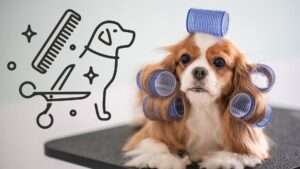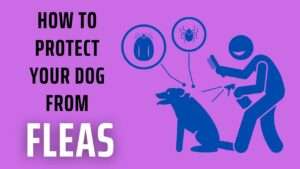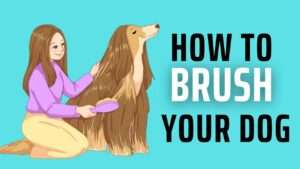Are you a dog owner looking to master the art of dog washing? Bath time can either be a delightful bonding experience or a chaotic mess. But fear not! In this comprehensive guide, we’ll cover everything you need to know to make bath time a breeze for both you and your furry friend.
Contents Overview
Why is Bathing Important for Dogs?
Bathing plays a vital role in maintaining the overall health and well-being of your canine companion. Here’s a detailed look at why bathing is important for dogs:
- Skin Health:
- Removes Dirt and Debris: Dogs are curious creatures that love to explore their surroundings, often resulting in dirt, mud, and debris accumulating on their skin and fur. Regular baths help remove these unwanted substances, preventing them from causing skin irritation or infections.
- Controls Sebum Production: Dogs naturally produce oils (sebum) to keep their skin moisturized. However, excessive sebum buildup can lead to oily, greasy skin, which can attract dirt and bacteria. Bathing helps regulate sebum production, keeping the skin balanced and healthy.
- Prevents Skin Conditions: Bathing can help prevent common skin conditions such as dermatitis, hot spots, and fungal infections by keeping the skin clean and free from irritants.
- Coat Maintenance:
- Removes Dead Hair: Like humans, dogs shed their fur regularly to make way for new growth. Bathing helps remove loose, dead hair from the coat, reducing shedding and preventing mats and tangles.
- Enhances Shine: A clean coat reflects light better, giving it a healthy shine. Bathing with a high-quality dog shampoo can help maintain the natural luster of your dog’s fur.
- Prevents Odor: Dogs can develop a distinct odor over time, especially if they spend time outdoors or have skin folds that trap moisture. Bathing helps eliminate odor-causing bacteria, keeping your dog smelling fresh and clean.
- Hygiene:
- Maintains Paw Health: Your dog’s paws come into contact with various surfaces, including dirt, grass, and pavement. Bathing helps clean your dog’s paws, reducing the risk of infections and removing any harmful substances they may have picked up.
- Prevents Ear Infections: Moisture and debris can accumulate in your dog’s ears, leading to painful ear infections. Regular bathing includes cleaning your dog’s ears, helping to prevent such infections and promoting ear health.
- Detection of Health Issues:
- Spotting Abnormalities: Bath time provides an excellent opportunity to inspect your dog’s skin, coat, and overall body condition. You can identify any unusual lumps, bumps, rashes, or signs of parasites during the bathing process, allowing for early detection and treatment of potential health issues.
- Veterinary Check-ups: If you notice any abnormalities during the bath, it’s essential to consult your veterinarian for further evaluation and treatment. Catching health problems early can lead to better outcomes for your dog.
Preparing for the Bath
Preparing for your dog’s bath is key to ensuring a smooth and stress-free experience for both you and your furry friend. Here’s a detailed guide on how to prepare for the bath:
- Gathering Supplies:
Before you begin, gather all the necessary supplies to have everything you need within reach. Here’s what you’ll need:
- Dog Shampoo: Choose a high-quality shampoo specifically formulated for dogs. Avoid using human shampoo, as it can be too harsh and may irritate your dog’s skin.
- Towels: Have several towels on hand to dry your dog after the bath. Opt for absorbent towels that can soak up excess moisture quickly.
- Dog Brush or Comb: Brushing your dog’s coat before the bath helps remove loose fur, mats, and tangles, making the bathing process more effective.
- Rubber Mat: Place a non-slip rubber mat in the bathtub or sink to provide traction and prevent your dog from slipping during the bath.
- Treats: Use treats as positive reinforcement to reward your dog for good behavior during the bath.
- Cotton Balls: Use cotton balls to protect your dog’s ears from water and shampoo during the bath.
- Detachable Showerhead or Cup: You’ll need a detachable showerhead or a large cup for rinsing your dog’s coat thoroughly.
- Pre-Bath Preparation:
Before you bring your dog to the bathing area, take the following steps to ensure a smooth bathing process:
- Brush Your Dog: Use a dog brush or comb to gently remove any loose fur, mats, or tangles from your dog’s coat. This helps prevent fur from clogging the drain and ensures thorough cleaning during the bath.
- Choose the Right Location: Select a suitable bathing spot based on your dog’s size and comfort level. This could be a bathtub, a sink, or even an outdoor area if the weather is warm and your dog enjoys bathing outside.
- Adjust Water Temperature: Test the water temperature to ensure it’s lukewarm and comfortable for your dog. Water that is too hot or too cold can be unpleasant and may cause your dog to become anxious during the bath.
- Secure Your Dog: Make sure the bathing area is secure and free from hazards. For larger dogs, use a non-slip mat in the bathtub to provide stability. Smaller dogs may feel more comfortable being bathed in a sink or a tub with lower sides.
- Setting the Mood:
Creating a calm and relaxed environment can help ease your dog’s anxiety and make the bath more enjoyable for both of you. Consider the following tips:
- Play Calming Music: Soft music or white noise can help drown out loud noises and create a soothing atmosphere.
- Use Aromatherapy: Certain scents, such as lavender or chamomile, have calming properties that can help relax your dog. You can use dog-safe aromatherapy sprays or diffusers in the bathing area.
- Provide Comfort Items: Offer your dog their favorite toy or blanket to help them feel secure during the bath.
The Bathing Process
The bathing process is a crucial aspect of dog grooming, ensuring your furry friend stays clean, healthy, and comfortable. Here’s a detailed guide on how to bathe your dog effectively:
- Wet Your Dog Thoroughly:
Before applying shampoo, wet your dog’s coat thoroughly with lukewarm water. Use a detachable showerhead or a large cup to wet your dog’s fur, starting from the neck and working your way down to the tail. Be gentle and avoid spraying water directly into your dog’s face, especially their eyes and ears.
- Apply Shampoo:
Dispense a small amount of dog shampoo into your hands and lather it onto your dog’s coat. Be sure to use a shampoo specifically formulated for dogs, as human shampoo can be too harsh and may irritate your dog’s skin. Focus on areas that tend to get dirtiest, such as the belly, paws, and behind the ears. Avoid getting shampoo in your dog’s eyes and ears, and use caution around sensitive areas.
- Massage and Rinse:
Gently massage the shampoo into your dog’s fur, working up a rich lather to thoroughly clean their coat. Pay attention to any particularly dirty or smelly spots, and take your time to ensure all areas are covered. Once the shampoo is evenly distributed, rinse your dog with clean water until all traces of shampoo are removed. Make sure to rinse thoroughly, as leftover shampoo residue can irritate your dog’s skin.
- Dry Thoroughly:
After the bath, use towels to pat your dog dry, absorbing as much moisture as possible. Start by gently squeezing the excess water from your dog’s fur, then wrap them in a towel and pat them dry. If your dog tolerates it, you can use a hairdryer on a low, cool setting to speed up the drying process. Be cautious not to use high heat, as it can burn your dog’s skin. Pay special attention to drying your dog’s ears, paws, and any areas where moisture tends to accumulate.
- Reward and Praise:
Once the bath is complete, reward your dog with treats and plenty of praise for being a good sport. Positive reinforcement helps create a positive association with bath time and reinforces good behavior. Make bath time a pleasant experience for your dog by offering treats, cuddles, and verbal praise throughout the process.
Tips for a Successful Bath:
- Stay Calm: Dogs can sense your emotions, so staying calm and relaxed will help keep your dog at ease during the bath.
- Be Patient: Not all dogs enjoy bath time, so be patient and understanding if your furry friend seems nervous or resistant.
- Protect Ears and Eyes: Use cotton balls to prevent water from getting into your dog’s ears, and be cautious when rinsing around the eyes.
- Use Positive Reinforcement: Reward your dog with treats and praise throughout the bathing process to reinforce good behavior.
- Post-Bath Activities: After the bath, engage in a fun activity with your dog, such as a game or a walk, to further reinforce positive associations with bath time.
Tips for a Successful Bath:
Making bath time a success for your dog involves more than just washing away dirt and grime. Here are some tips to ensure a successful bath experience:
- Stay Calm and Relaxed:
Dogs can pick up on your emotions, so it’s essential to stay calm and relaxed during bath time. Your demeanor can influence your dog’s behavior, so maintaining a positive and calm attitude will help keep your dog at ease.
- Be Patient and Understanding:
Not all dogs enjoy bath time, and some may feel anxious or scared. Be patient with your dog and understand that it may take time for them to adjust to the bathing process. Avoid rushing or forcing your dog into the bath, as this can cause further stress and resistance.
- Protect Ears and Eyes:
During the bath, take precautions to protect your dog’s ears and eyes from water and shampoo. Use cotton balls to prevent water from entering your dog’s ears, and be careful when rinsing around the eyes to avoid irritation.
- Use Positive Reinforcement:
Positive reinforcement is key to making bath time a positive experience for your dog. Offer treats, praise, and rewards throughout the bathing process to reinforce good behavior. This creates a positive association with bath time and encourages your dog to cooperate willingly.
- Establish a Routine:
Establishing a regular bathing routine can help your dog become more accustomed to the process over time. Consistency and predictability can reduce anxiety and make bath time less stressful for your dog.
- Use Dog-Friendly Products:
Always use grooming products specifically formulated for dogs. Human shampoos and soaps can be too harsh for your dog’s sensitive skin and may cause irritation or allergic reactions. Opt for gentle, dog-friendly products to ensure a safe and effective bath.
- Thoroughly Dry Your Dog:
After the bath, make sure to dry your dog thoroughly to prevent moisture-related skin issues and discomfort. Use towels to absorb excess water from your dog’s coat, focusing on areas where moisture tends to accumulate, such as the ears and paws.
- Make Bath Time Fun:
Turn bath time into a fun and enjoyable experience for your dog by incorporating play and positive reinforcement. Offer toys or treats to keep your dog entertained during the bath, and engage in playful interactions to make the experience more enjoyable.
Bottom Line
Bathing your dog doesn’t have to be a daunting task. With the right preparation, supplies, and approach, you can turn bath time into a enjoyable and bonding experience for both you and your canine companion. So, roll up your sleeves, gather your supplies, and get ready to make your pup sparkle and shine!
































+ There are no comments
Add yours